Lobophyllia rowleyensis
This species is differentiated from other mussids by its large dome-shaped colonies that feature shallow ceroid corallites, or corallites in short valleys. Corallite walls are thick, so too are the skeletal elements within the corallite, particularly the highly granulated septa. Dark green, grey or bright green with yellow and red corallite centres.
Morphology
Large dome-shaped colonies that feature shallow ceroid corallites, or corallites in short valleys.
Evolution
Species age estimated to be 22.3356 mya.
Method of reproduction
As one of the more recently described corals (and genera) little is known about the biology or taxonomy of this species. Colonies have been observed to form chimeras where two separate polyps fuse and grow in tandem.
Habitat
Marine
Subtidal lower reef slopes (5-40m).
Distribution
Central Indo-Pacific, NW Australia.
| Kingdom: | Animalia |
|---|---|
| Phylum: | Cnidaria |
| Class: | Anthozoa |
| Subclass: | Hexacorallia |
| Order: | Scleractinia |
| Family: | Lobophylliidae |
| Genus: | Lobophyllia |
| Species: | rowleyensis |
| Name Published Year: | 1985 |
|---|---|
| Rank: | species |
| Scientific Name Authorship: | Veron |
| Commercial Impact: | As with other lobophyllid corals, its thick tissue and in some cases, bright colours make it valuable to aquarium collectors. |
| Conservation Assessment: | Near Threatened |
Cite this page
Western Australian Museum Collections https://museum.wa.gov.au/online-collections/names/lobophyllia-rowleyensis
Accessed 22 Dec 2025
Rights
We support the open release of data and information about our collections.
Text content on this page is licensed under a Creative Commons Attribution 4.0 International License.
Image content on this page is copyright WA Museum.


